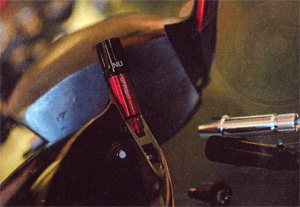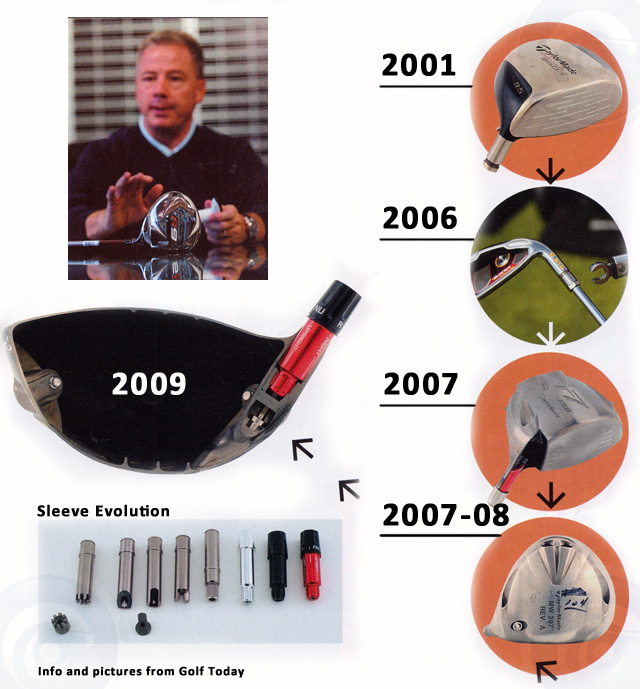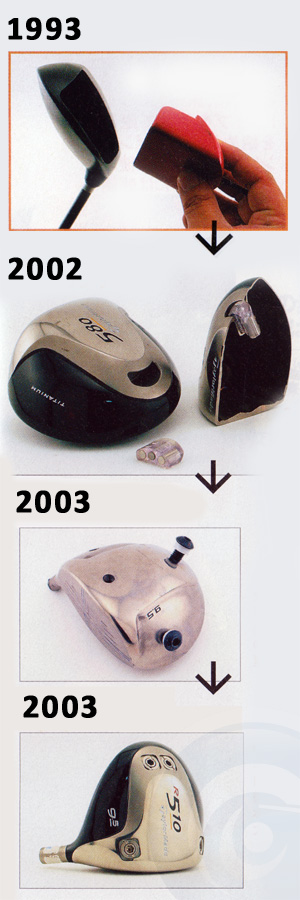 Taylormade releases a lot of new golf clubs on a regular basis. This is because their R&D department is always working away at producing new designs and trying new things. Some people say they come out with too many products too fast but this is in fact a strategy used by TM emulated from believe it or not Japanese brands. Golf brands believe golfers want to see the latest innovations and see them quick. As Mark King CEO was quoted in BusinessWeek back in February:
Taylormade releases a lot of new golf clubs on a regular basis. This is because their R&D department is always working away at producing new designs and trying new things. Some people say they come out with too many products too fast but this is in fact a strategy used by TM emulated from believe it or not Japanese brands. Golf brands believe golfers want to see the latest innovations and see them quick. As Mark King CEO was quoted in BusinessWeek back in February:
Chief Executive Officer Mark King calls the company’s lickety-split rollout schedule “relentless innovation.” It’s an idea he imported from Japan, where, during a 2000 business trip, he saw how Japanese golf-equipment manufacturers were trouncing leisurely paced American leaders by turning out new products much more often.
 A few years ago they came out with MWT or Moveable Weight Technology and this year in the R9 series FCT or Flight Control Technology. What many golfers don’t know is that these technologies did not just happen overnight. Taylormade has been working on them for a very long time and have in fact developed many prototypes over the years that have not made it to the retail market or tour scene at all. These are the true prototypes of Taylormade.
A few years ago they came out with MWT or Moveable Weight Technology and this year in the R9 series FCT or Flight Control Technology. What many golfers don’t know is that these technologies did not just happen overnight. Taylormade has been working on them for a very long time and have in fact developed many prototypes over the years that have not made it to the retail market or tour scene at all. These are the true prototypes of Taylormade.
The work of Mr. Toulon and Mr. Vincent
A big part of Taylormade’s club evolution is Sean Toulon, EVP of Innovation, Global Product and Brand Creation. Mr. Toulon was a former Taylormade sales representative who founded Zevo Golf, a cutting edge brand that included Zevo Shot control an adjustable driver, before coming back to TM and heading up equipment marketing before being promoted to his current position. Golf Today in Japan recently featured Mr. Toulon and another Taylormade visionary, Benoit Vincent, Chief Technology Officer and their prototype and development work for creating the new R9 Series. Mr. Toulon along with Mr. Vincent, have brought Taylormade to new heights of innovation over the past decade with MWT and FCT. Lets peek into the history of some of Taylormade’s innovative prototypes of years past.
Flight Control Technology
First lets take a look at Flight Control Technology. The first FCT style “sleeve” first appeared in 2001 with the 360Ti driver. This sleeve which was built as a part of the driver allowed shafts to be changed in and out. In 2006 Taylormade placed a “Select Fit System” sleeve on the Burner Iron. In 2007 the makings of an R9 sleeve began with a prototype in the r7 425. Between 2007 and 2008, Taylorade used a r7 CGB Prototype which featured a very close to production FCT sleeve and sole screw for attachment. In 2009 the R9 Series with Flight Control Technology was officially born!

Moveable Weight Technology

Taylormade first began playing with the idea of changing weight on a driver back in1993 with its M27 Prototype which was a catridge type removable plate in the back of the head.
In 2002 they utilized a 3 weight variation system in an R500 Series Prototype. This was a smaller catridge system with smaller weights inserted into the back bottom sole.
In 2002 and 2003 they the first MWT Prototype was born utilizing three head screw weights in the toe heel and back of the driver.
This prototype evolved into the R510 MWT Prototype which actually used 4 weight ports, one in the toe and one in the heel and two in the back sole.
MWT can now be found in drivers and fairway woods and utilities and even Taylormade putters. Being able to change your ball flight has helped make Taylormade not only the number one driver on tour but also one of the best selling brands worldwide.
The introduction of Flight Control Technology has helped them gain even more market share as it allows even the average golfer to adjust loft, lie, face angle and change shafts on the fly. This has allowed different swing type players to purchase the exact same driver and configure it for their own type of shot.
So what does the future have in store for Taylormade? Most likely more innovation and busy rollout schedule to satisfy every golfer’s needs.
Get your FCT fix in the pro shop with the XR FCT, R9 Max and R9 Max Type E!


This is a great club and instruction!